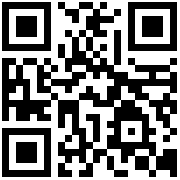To roll aluminum plate, you need preheated aluminum sheet ingots that weigh as much as or more than twenty tons. A normal ingot for this process might be six feet wide, twenty feet long, and two feet thick. The metal is heated to the proper rolling temperature and then rolled back and forth until it is flattened to a few inches thick. Depending upon the desired properties of the sheet, the slab might then be cold rolled or heat-treated as necessary. Following the temperature treatment, the final sheet is produced and trimmed to its desired size.
When sheet or foil is wanted, further rolling will be necessary. In this case, the slab is rolled in a continuous mill and then wound into an aluminum coil. The distinction between them is that plate is the term used for flat metal that is more than 3 millimeters thick, while sheet refers to metal that is less than 3 millimeters thick. Foil has a thickness that is less than .15 millimeters.
In addition to the above, rolling mills can also different sorts of cages in order to produce various shapes. The initial billet, whether its round or square, is deformed in order to produce material with a smaller cross-section dimension and geometry. The various processes include roll bending, which results in a cylindrical shaped final product, and roll forming, a bending process that involves a long metal strip being passed through consecutive rolls to produce the desired cross-section profile.
What Applications Rely on Aluminum Sheet and Plate Rolling?
Because aluminum sheet is so versatile, it can be used in countless applications. This is due to the fact that it is receptive to being shaped, finished, and fabricated in all manner of ways, not to mention the great variety of alloys that are available. Sheet can have many different surfaces, such as painted, polished, coated, laminated, anodized, etched, or textured. As for machining, aluminum sheet can be sheared, sawed, or drilled, or it can be formed via bending, corrugation, or stamping. Sheet can also be joined with other materials through a variety of processes, including riveting, bolting, clinching, brazing, soldering, bonding, or welding.
Some of the many applications for aluminum sheet include beverage and food cans, cooking utensils, awnings, Venetian blinds, siding, roofing, gutters, street signs, license plates, heat exchangers, automobile parts, vehicle panels, boat hulls, and aircraft bodies.
When it comes to the much thicker aluminum plate, the material will often be used to cut out or machine aluminum parts, for instance for the ribbed wing plates of aircraft. Other applications include railroad gondola, tank cars, battle armor, large ship structures, offshore oilrigs, storage tanks, and spacecraft components.
As for aluminum foil, applications include food packaging, pharmaceutical packaging, laminated vapor barriers, artificial Christmas trees, sound diaphragms, and adhesive-bonded structural honeycomb.




QR Code
